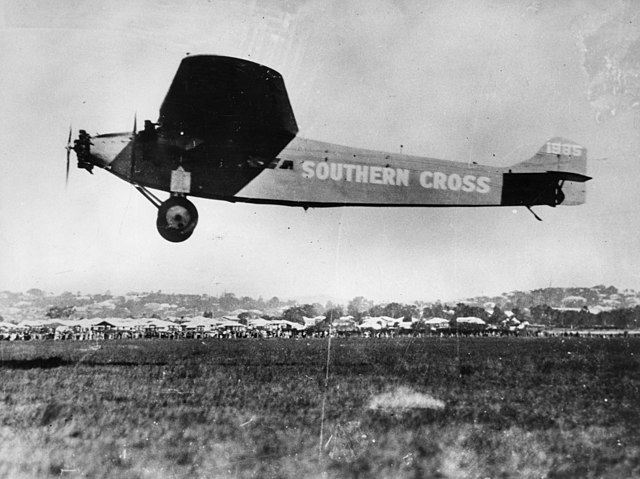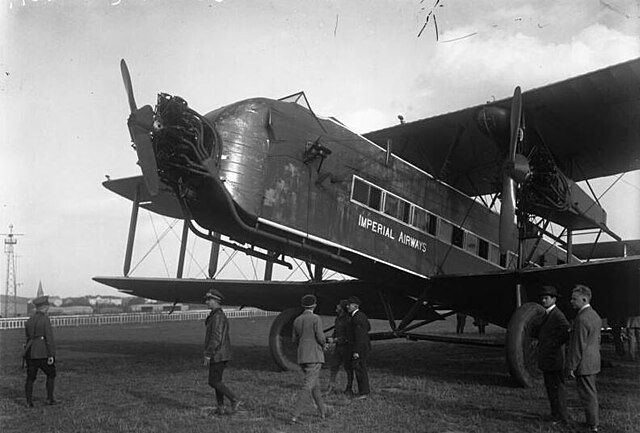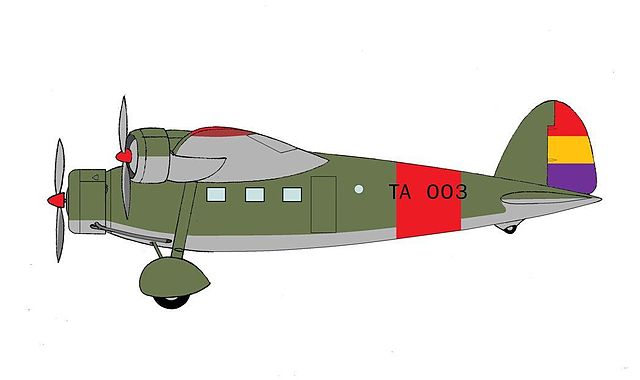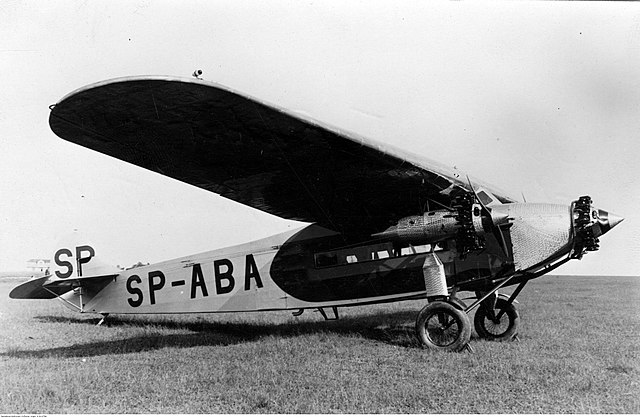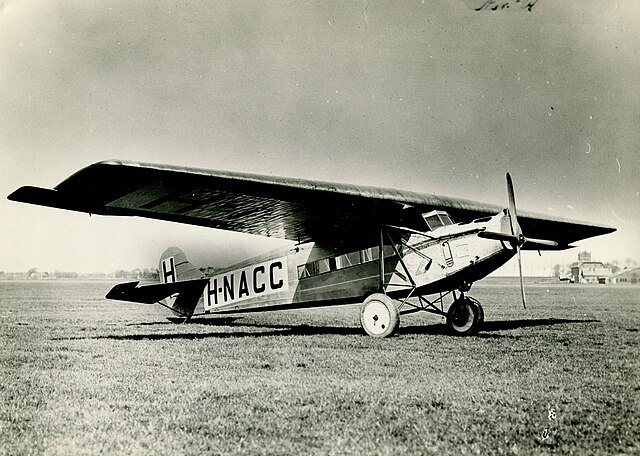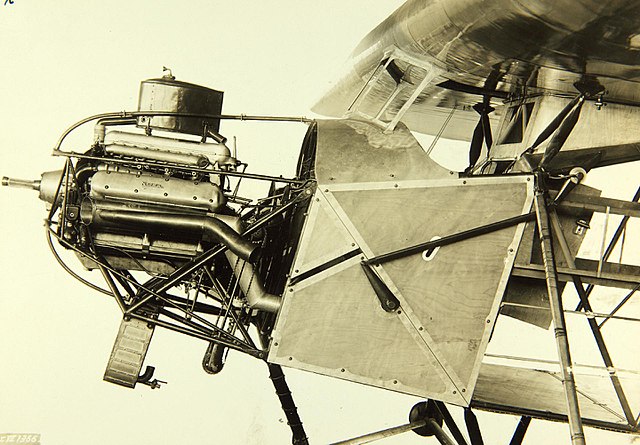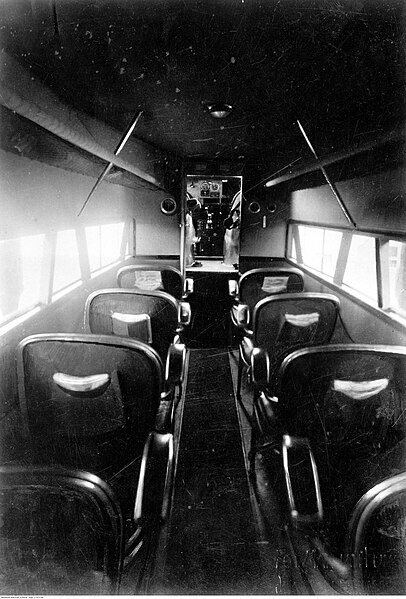A trimotor is a propeller-driven aircraft powered by three internal combustion engines, characteristically one on the nose and one on each wing. A compromise between complexity and safety, such a configuration was typically a result of the limited power of the engines available to the designer. Many trimotors were designed and built in the 1920s and 1930s as the most effective means of maximizing payload.
Nearly 5,000 Junkers Ju 52/3m were built, the most of any trimotor
Fokker F.VIIb/3m landing in Brisbane in 1928 after making first crossing of the Pacific
Imperial Airways Armstrong Whitworth A.W. 154 Argosy
Only three Avia 51 were produced
The Fokker F.VII, also known as the Fokker Trimotor, was an airliner produced in the 1920s by the Dutch aircraft manufacturer Fokker, Fokker's American subsidiary Atlantic Aircraft Corporation, and several other companies under license. It was an airliner that could carry 6-12 people, depending on the version, and it used a variety of engines; early versions had one engine but three was more common.
Fokker F.VII
F.VII prototype at Schiphol airport.
The Napier Lion engine exposed in the nose of a F.VII
Seating arrangement in the 8-passenger F.VIIB-3m


